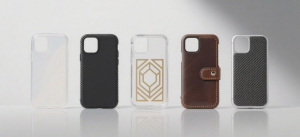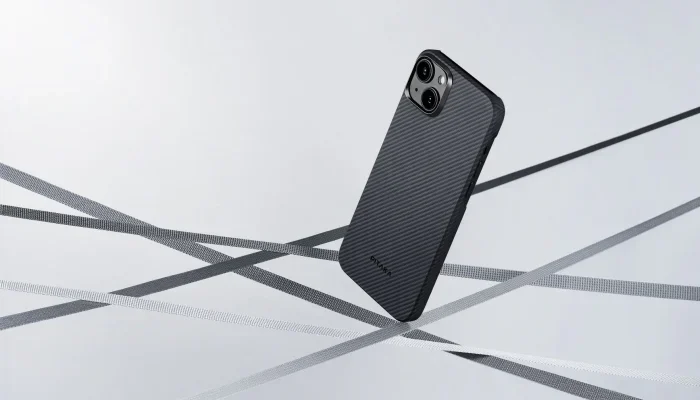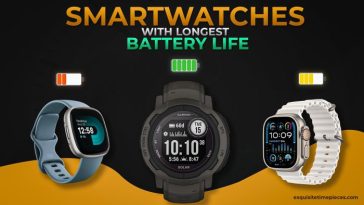
Choosing the right phone case material can be as important as the design itself, impacting not just protection but also usability, comfort, and even the performance of your device. This guide dives into some of the most common and innovative materials used in phone cases, including Polycarbonate (PC) plastic, silicone, and MagSafe-compatible materials, offering you a clear, expert comparison to help you make the best choice.
PC Plastic: Superior Heat Dissipation and Durability
Polycarbonate (PC) is a popular choice for phone cases due to its excellent heat resistance and sturdiness. Unlike some plastics, PC effectively dissipates heat generated by your phone during long use or charging. This heat dissipation is critical in preventing performance throttling and battery strain caused by overheating. PC cases often feature ventilated designs or internal channels allowing optimal airflow, keeping your device cool and extending its longevity.
Moreover, PC is highly scratch-resistant and offers a firm, rigid shell that protects against physical impacts without excessive bulk. The lightweight nature of PC plastics (typically around 15-20 grams for a case) balances protection with portability, making it ideal for those worried about their phone heating up or needing durable everyday defense.12
Silicone: Anti-Slip Grip and Shock Absorption
Silicone phone cases excel at providing a comfortable, anti-slip grip and shock absorption. Silicone is flexible, lightweight, and pleasant to hold, making it perfect for everyday use. Manufacturers enhance grip through methods like micro-texturing on the surface, incorporating grip powders within the material, and ergonomic shaping to fit the hand better. These features significantly reduce accidental drops caused by slippery phone cases, especially in humid conditions or during active use.
Silicone materials do not conduct heat well but allow for slow heat release, which suffices for casual users but might fall short during intensive gaming or extended phone use. Additionally, silicone cases may attract dust over time, requiring regular cleaning to maintain aesthetics and grip.3
MagSafe-Compatible Cases: Seamless Charging with Style and Function
With the rise of Apple’s MagSafe technology, phone cases now also focus on compatibility with magnetic wireless charging and accessories. A MagSafe-compatible case typically incorporates a ring of magnets embedded or positioned precisely to align with the iPhone’s charging coil. Materials often include polycarbonate combined with anti-yellowing coatings or premium vegan leather for luxury options. These materials are engineered to retain durability and style while allowing the magnetic connection to work flawlessly.
The main advantage is optimized wireless charging efficiency and accessory attachment, such as wallets and mounts, without removing the case. Plus, many MagSafe cases maintain slim profiles (around 2-3mm thick) and lightweight designs (approximately 30-32 grams), preserving the phone’s form factor.4
Thickness and Weight Comparison
| Material | Approx. Thickness (mm) | Approx. Weight (g) | Key Advantages | Ideal For |
|---|---|---|---|---|
| Silicone | 1.8 – 2.0 | 30 – 32 | Anti-slip grip, shock absorption | Everyday use, lightweight feel |
| Polycarbonate (PC) | 1.5 – 2.5 | 15 – 20 | Heat dissipation, rigid protection | Users prone to overheating |
| MagSafe-Compatible PC | 2.0 – 3.0 | 30 – 32 | Wireless charging, magnetic addons | Apple ecosystem users |
| Aramid Fiber (e.g., Kevlar) | 1.5 – 2.5 | Varies | High durability, lightweight | Maximum protection, premium cases |
Note: Aramid fiber (like Kevlar) cases are premium options, offering outstanding durability and lightweight properties, often used in protective and rugged designs.
Conclusion
Your ideal phone case material depends on your priorities:
- For heat management and durability, PC plastic is the best pick.
- To prevent slips and enhance grip, silicone cases with anti-slip technologies excel.
- If you want seamless wireless charging and magnet accessory compatibility, choose a well-engineered MagSafe-compatible case with embedded magnets.
- For the highest durability combined with lightness, consider advanced materials like aramid fibers.
By understanding these materials’ unique attributes, you can select a phone case that suits your lifestyle and safeguards your device efficiently.




 No products in the cart.
No products in the cart.